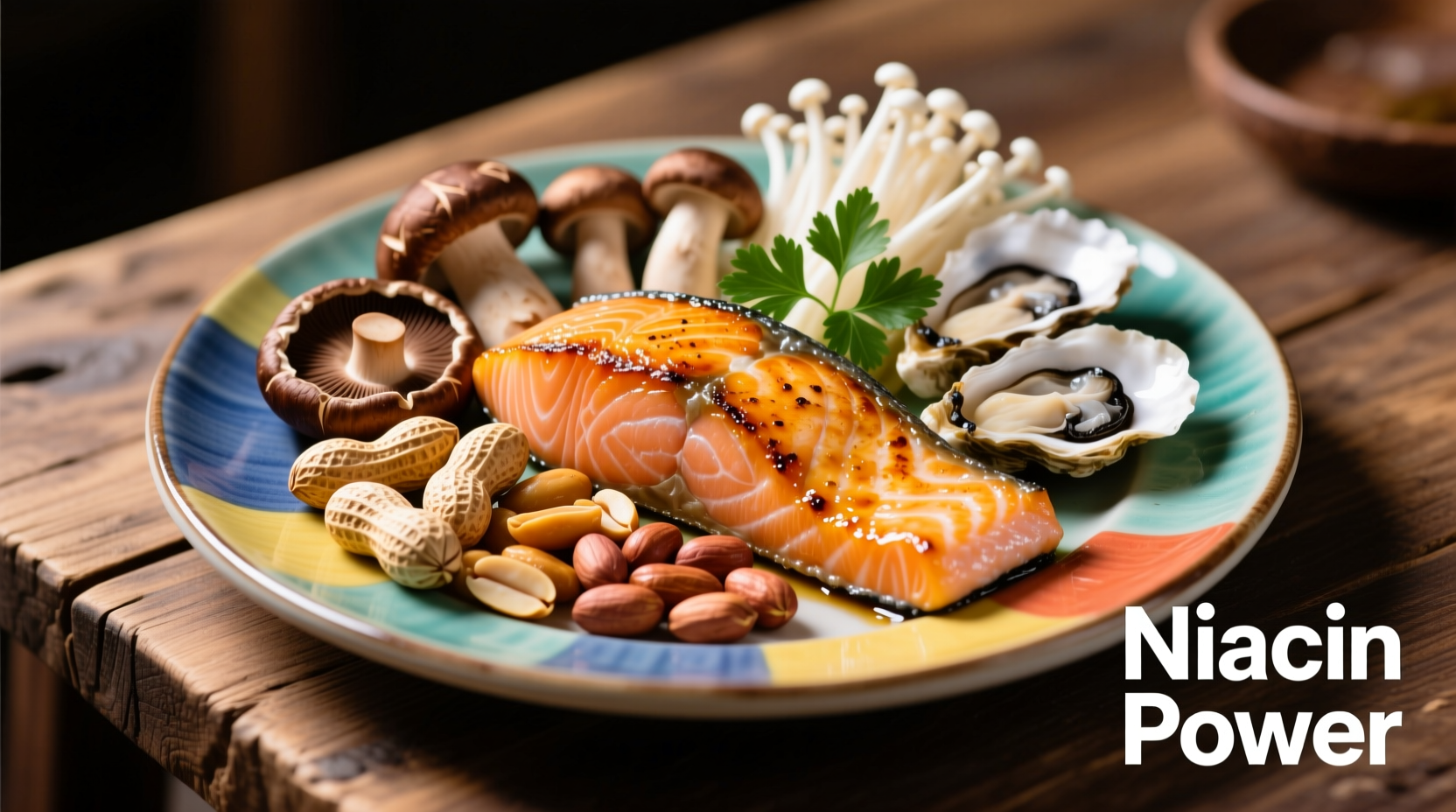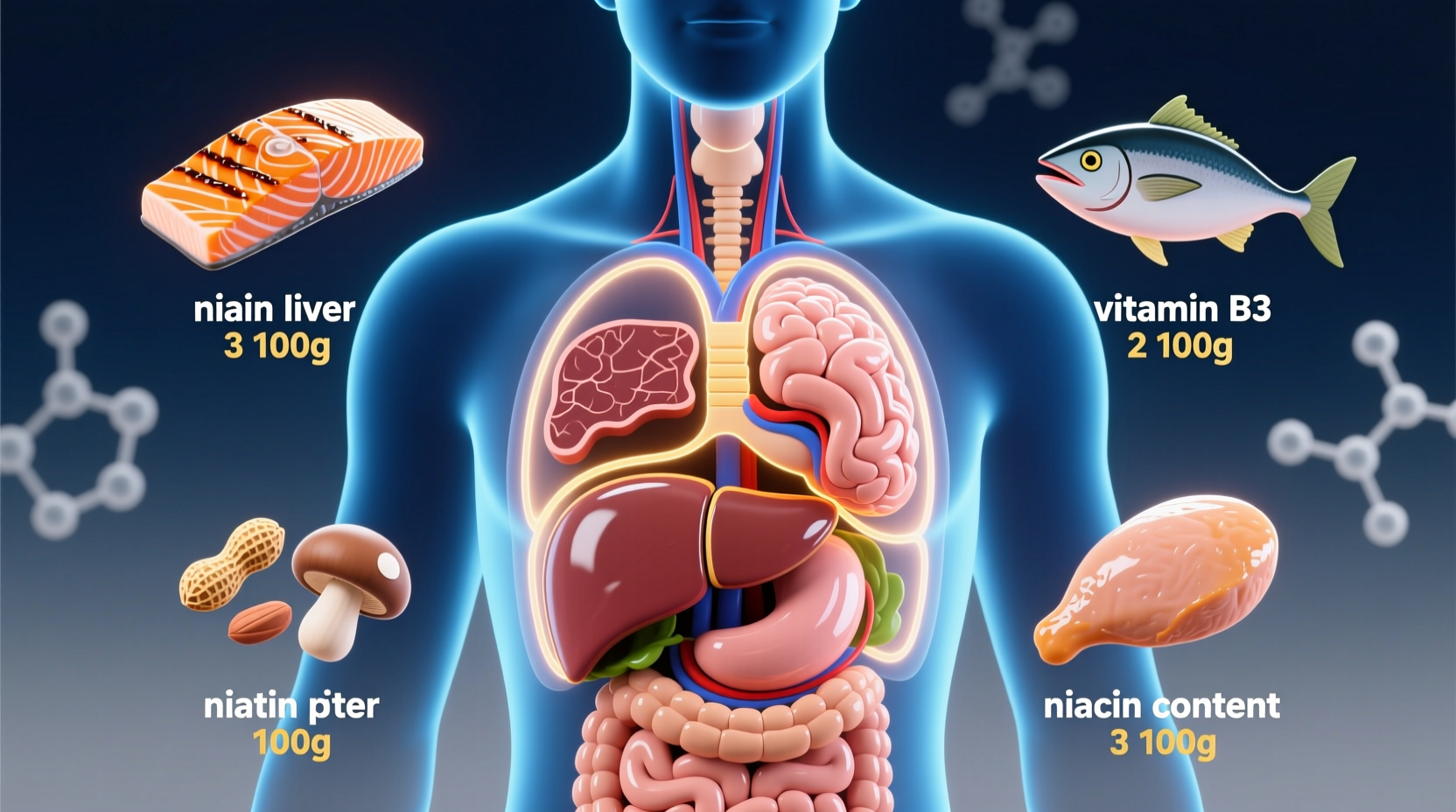Top niacin-rich foods include liver (chicken or beef), tuna, salmon, turkey, peanuts, mushrooms, green peas, sunflower seeds, and fortified cereals. Just 3 ounces of cooked tuna provides over 100% of your daily niacin needs. This essential B-vitamin supports energy metabolism, nervous system function, and skin health.
Discover exactly which foods deliver the most niacin per serving, how much you actually need daily, and practical ways to incorporate these nutrient powerhouses into your meals. Whether you're managing dietary restrictions or simply optimizing your nutrition, this guide provides science-backed food choices verified by USDA nutritional databases and clinical research.
Why Niacin Matters: Beyond Basic Nutrition
Niacin (vitamin B3) isn't just another vitamin on the supplement shelf—it's a metabolic powerhouse. According to the National Institutes of Health, this essential nutrient converts food into usable energy, maintains healthy skin cells, supports nerve function, and helps produce steroid hormones. Unlike some vitamins, your body can't produce niacin independently, making dietary sources critical.
Deficiency can trigger serious health issues including pellagra—a condition characterized by dermatitis, diarrhea, and dementia. While rare in developed countries, certain populations face higher risks: people with alcohol use disorder, Crohn's disease, or those taking specific medications like isoniazid. Understanding which foods deliver optimal niacin absorption could be your first line of defense.
Top Animal-Based Niacin Powerhouses
Animal proteins consistently rank highest for niacin content due to their complete amino acid profiles. These foods provide preformed niacin (nicotinic acid) that your body utilizes efficiently:
| Food (3 oz serving) | Niacin (mg) | % Daily Value |
|---|---|---|
| Liver (chicken, cooked) | 14.7 | 92% |
| Tuna (yellowfin, cooked) | 11.3 | 71% |
| Salmon (sockeye, cooked) | 8.6 | 54% |
| Turkey (light meat, roasted) | 5.8 | 36% |
| Chicken breast (roasted) | 5.3 | 33% |
Notice liver's exceptional concentration? A single 3-ounce serving delivers nearly your entire daily requirement. While some avoid organ meats, chicken liver's mild flavor works well in pâtés or blended into meatloaf. For seafood lovers, canned light tuna remains a convenient option—just drain water to maximize nutrient density per bite.

Plant-Based Niacin Sources That Deliver
Vegetarians and vegans can meet niacin requirements through strategic food choices. Plant sources contain niacin primarily as nicotinamide, which has slightly different absorption characteristics. Pair these with vitamin C-rich foods to enhance bioavailability:
- Peanuts (1 oz): 4.4mg (28% DV) - Perfect in stir-fries or as natural peanut butter
- Mushrooms (½ cup cooked): 2.5-5.6mg (16-35% DV) - Portobellos and shiitakes lead the pack
- Sunflower seeds (¼ cup): 3.8mg (24% DV) - Sprinkle on salads or blend into seed butter
- Green peas (½ cup cooked): 2.1mg (13% DV) - Frozen varieties retain nearly identical nutrition
- Brown rice (1 cup cooked): 1.9mg (12% DV) - Choose parboiled for maximum nutrient retention
Fortified cereals bridge nutritional gaps effectively. Many breakfast options provide 20-30mg per serving—up to 200% of your daily needs. However, check labels carefully as processing can degrade B-vitamins over time. Opt for cereals consumed within 30 days of production for peak potency.
Maximizing Niacin Absorption: Practical Kitchen Science
Not all niacin sources deliver equal benefits. Food preparation significantly impacts bioavailability:
- Cooking method matters: Boiling mushrooms reduces niacin content by 25% compared to sautéing (USDA FoodData Central)
- Pair strategically: Combine niacin-rich foods with vitamin C sources like bell peppers or citrus to boost absorption
- Avoid processing pitfalls: Milling grains removes 70% of natural niacin—choose whole grains whenever possible
- Timing considerations: Consume niacin-containing foods throughout the day since your body excretes excess amounts
For those managing specific health conditions, consider these context boundaries: People with diabetes should monitor blood sugar when increasing high-carb niacin sources like fortified cereals. Those with gout may need to limit organ meats despite their nutritional density. Always consult your healthcare provider before making significant dietary changes.
Meeting Daily Requirements Through Realistic Eating Patterns
The Recommended Dietary Allowance (RDA) for niacin varies by age and gender:
- Adult men: 16mg daily
- Adult women: 14mg daily
- Pregnant women: 18mg daily
- Nursing mothers: 17mg daily
Here's how to hit these targets without supplements:
Sample Day: Breakfast: Fortified cereal (20mg) + Lunch: Tuna salad sandwich (15mg) + Dinner: Stir-fried mushrooms with brown rice (7mg) = 42mg total. While this exceeds daily needs, excess niacin safely exits your system through urine.
For plant-based eaters: Breakfast: Fortified oatmeal (10mg) + Snack: Peanut butter on whole wheat (5mg) + Dinner: Lentil curry with sunflower seeds (8mg) = 23mg total. This pattern demonstrates how strategic food combinations prevent deficiency while accommodating dietary preferences.
When Food Isn't Enough: Recognizing Special Cases
While most people meet niacin needs through diet, certain situations warrant professional guidance:
- Alcohol use disorder impairs niacin absorption—up to 50% of chronic drinkers show deficiency markers
- Inflammatory bowel diseases like Crohn's reduce nutrient uptake efficiency
- Medications including cholesterol drugs (statins) and tuberculosis treatments interfere with niacin metabolism
- Vegans in regions with corn-based diets face higher deficiency risks due to limited tryptophan conversion
If you experience persistent fatigue, skin rashes, or digestive issues despite eating nutrient-dense foods, consult a registered dietitian. They can analyze your specific dietary patterns and recommend targeted solutions beyond generic food lists.
Your Niacin Action Plan
Start implementing these evidence-based strategies today:
- Swap one processed snack weekly for niacin-rich alternatives like roasted chickpeas or sunflower seeds
- Add mushrooms to three meals weekly—they're among the few plant foods with meaningful niacin content
- Choose canned fish in water rather than oil to maximize nutrient density per calorie
- Track your intake for one week using free apps like Cronometer to identify potential gaps
- Discuss blood work with your doctor if you have risk factors for malabsorption
Remember that nutritional excellence happens through consistent, manageable changes—not perfection. By strategically incorporating these niacin-rich foods into your existing eating patterns, you'll support your body's fundamental metabolic processes without drastic lifestyle overhauls.











 浙公网安备
33010002000092号
浙公网安备
33010002000092号 浙B2-20120091-4
浙B2-20120091-4